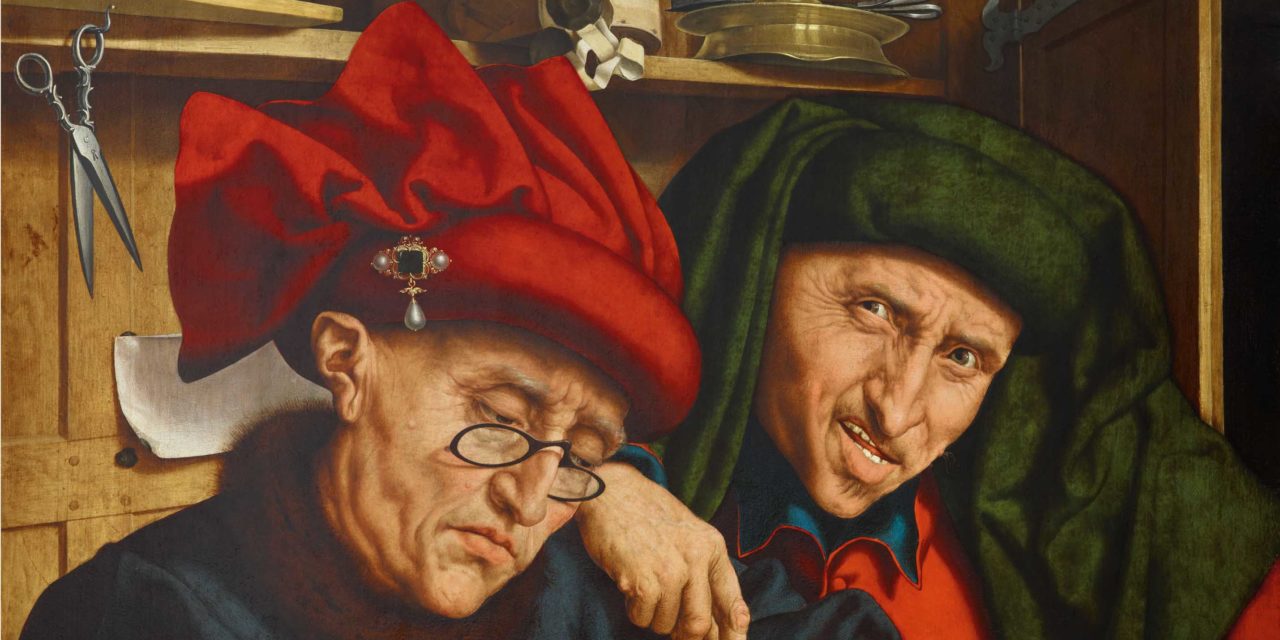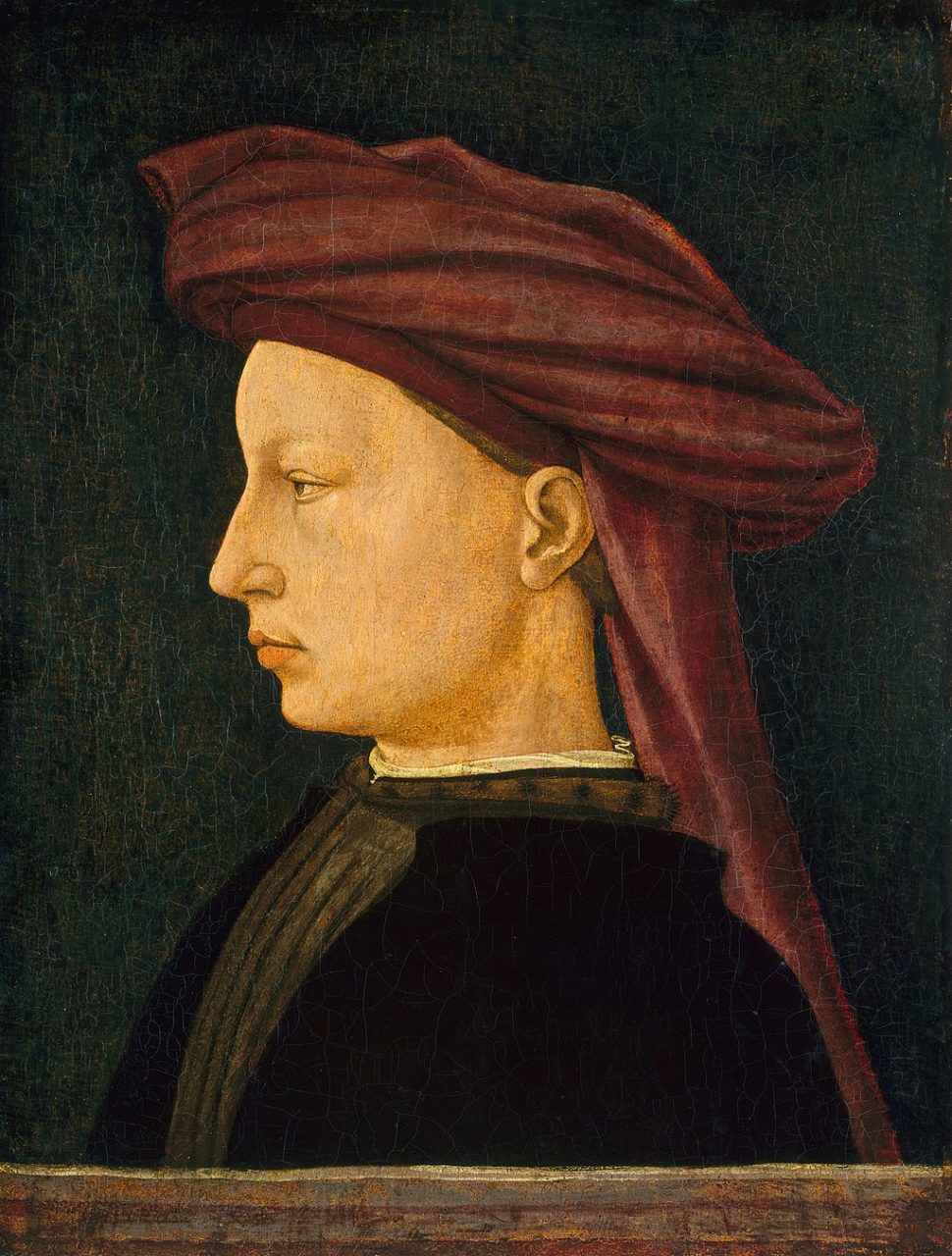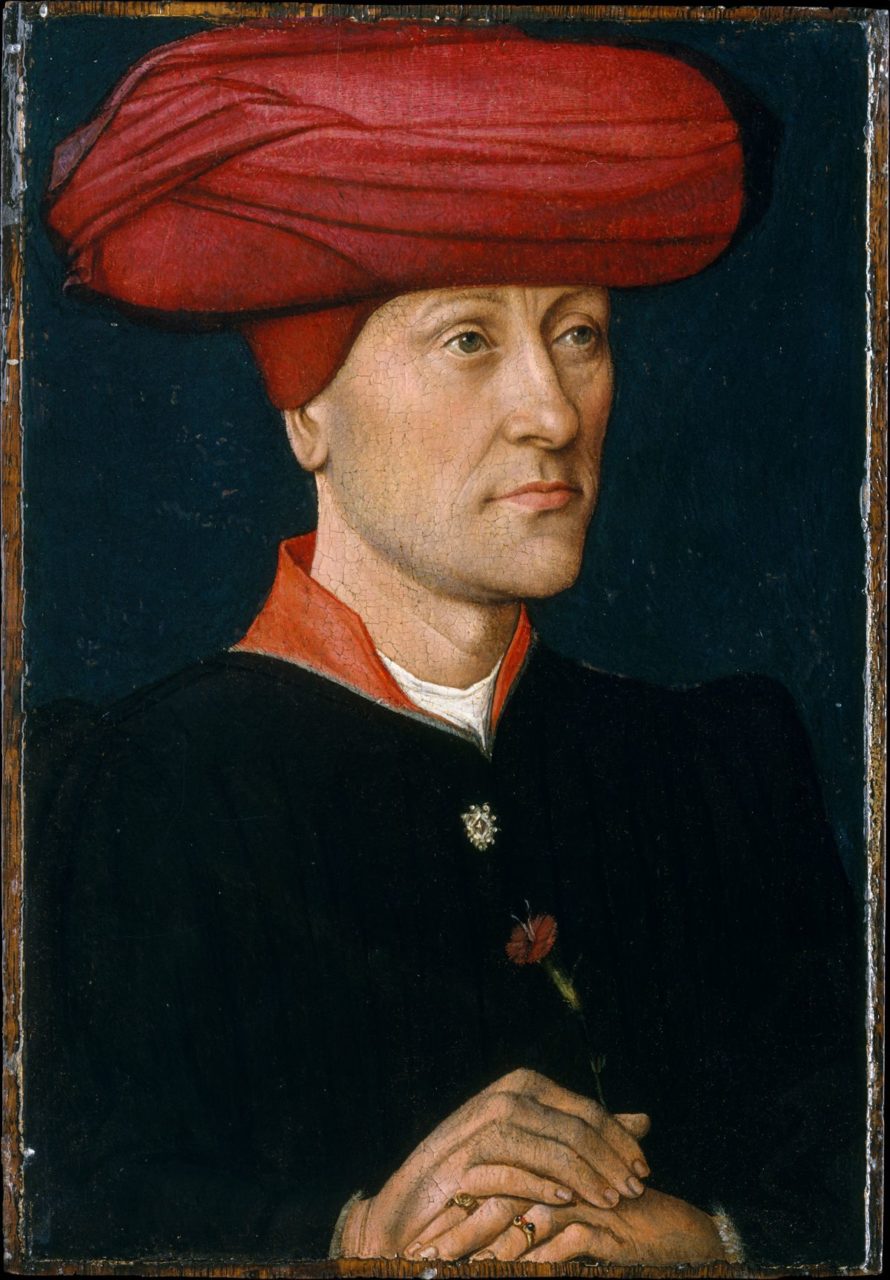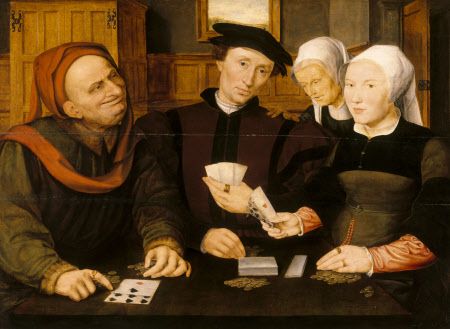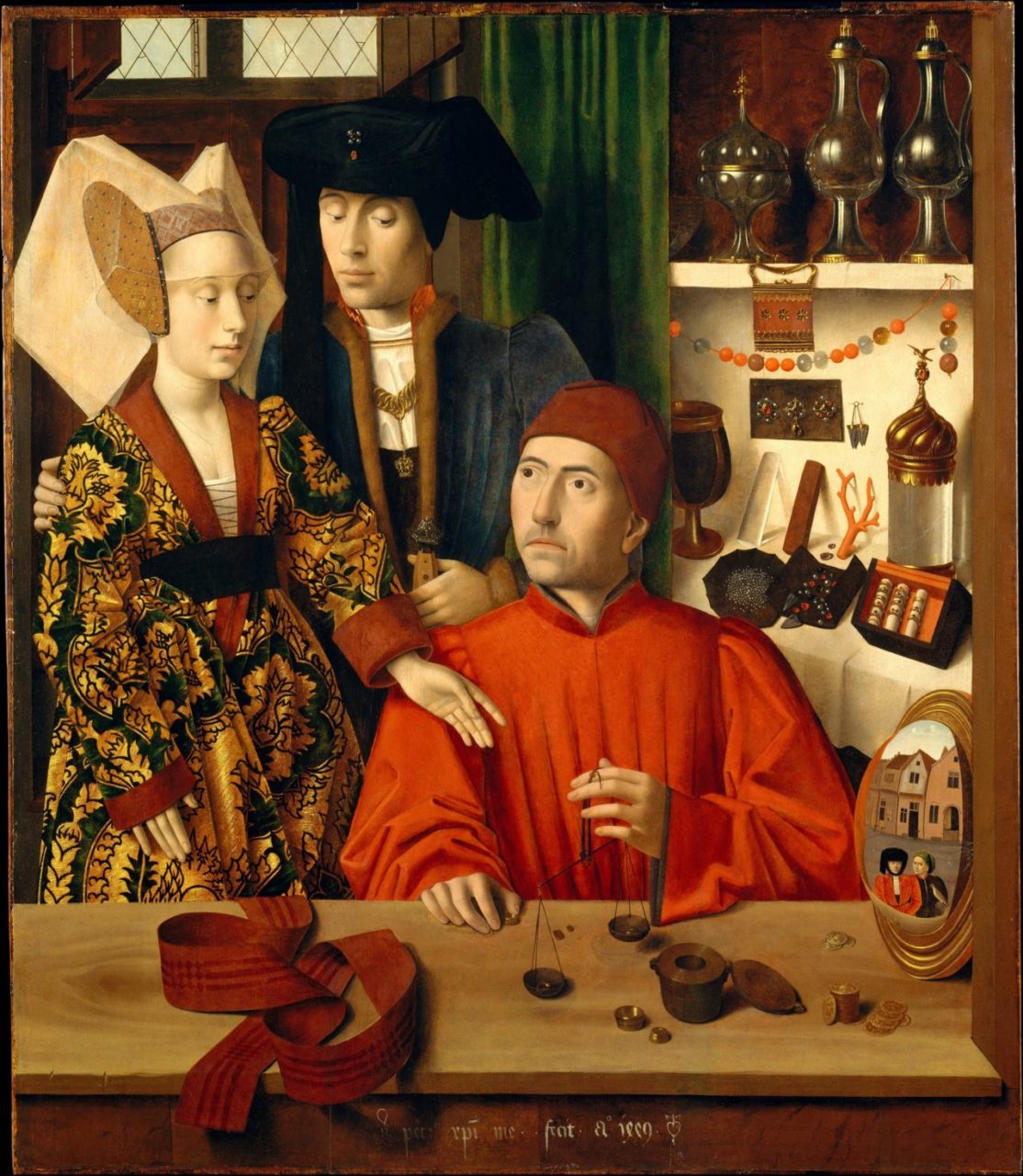A turban-like headdress worn during the Middle Ages in Western Europe.
The Details
Madge Garland and J. Anderson Black write about how the style of wearing a chaperon changed over time in A History of Fashion (1975):
“Nowhere is change more apparent for both sexes than in headdresses. A short shoulder-cape with hood, the chaperon, continued to be fashionable and the liripipe or taper grew and grew until, by about 1420, it sometimes reached the ground and, to avoid tripping over it, the wearer frequently tucked it into his belt or wrapped it round his neck.” (133)
The liripipe, the long hanging portion of what was originally the hood, can be seen at the right side of figure 1, hanging over the man’s left shoulder.
Phyllis G. Tortora explains this further in the Survey of Historic Costume (2015):
“The chaperon was a hooded shoulder cape with a hanging tail variously called a liripipe, cornet, or tippet… New styles included a hat with a low, round crown and an elongated, pointed brim at the front and one with a high, domed crown and small, rolled or turned-up brim.” (158)
The fashionable roll can be seen clearly in figure 2, on the head of Giovanni Arnolfini; much of the fabric is left to hang down to the shoulders, hence the term ‘shoulder cape’, which may be slightly misleading.
Fig. 1 - Jan van Eyck (Flemish, c. 1385-1441). Man in a Blue Cap, ca. 1430. Oil on wood; width 13.2 x height 19.1 cm. Sibiu: Brukenthal National Museum. Source: Google Arts & Culture
Fig. 2 - Artist unknown possibly Masaccio (Italian). Profile Portrait of a Young Man, ca. 1430-50. Tempera on panel; 42.4 x 32.5 cm (16 11/16 x 12 13/16 in). Washington, D.C.: The National Gallery of Art, 1937.1.14. Andrew W. Mellon Collection. Source: NGA
Fig. 3 - Artist unknown (Dutch). Portrait of a Man in a Chaperon, 1440–50. Oil on wood; 27.9 x 19.7 cm (11 x 7 3/4 in). New York: The Metropolitan Museum of Art, 49.7.24. The Jules Bache Collection, 1949. Source: MMA
Fig. 4 - Quentin Massys (Flemish, 1466–1530). The Tax Collectors, ca. 1525. Oil on panel; 86 x 71 cm. Vaduz/Vienna: Lichtenstein Collection. Source: Kunstmuseum Lichtenstein
Elizabeth and Dan Lewandowski helpfully define both chaperon and liripipe in The Complete Costume Dictionary (2011):
“Chaperon: Late Gothic (1350-1450 C.E.). Caped hood with long liripipe which was sometimes worn draped around shoulders. Later worn with face opening over top of head and cape drooping decoratively over side. (59)
“Liripipe: Early Gothic (1200-1350 C.E.). Long streamer attached to a headdress.” (176)
The liripipe is somewhat vestigial at this point in time, but aided in the wrapping of the garment. The ca. 1445 chaperon in figure 3 was created by wrapping its liripipe around the brim at the end of the process and folding it in; later chaperons may have lost the liripipe and original hood structure entirely. The ca. 1525 chaperons in figure 4 have firmly rolled brims from which the rest of the fabric cascades out and down, and one man accessorized his with a brooch.
Not all chaperons can be easily dated by their style; the mid-16th-century painting in figure 5 depicts a man in what looks to be a chaperon in a much older style, as the original liripipe hood sitting off of his head instead of pulled down. The liripipe has been draped around his shoulders so that it does not drag.
In The Dictionary of Fashion History (2010), Valerie Cumming, C. W. Cunnington, and P. E. Cunnington describe ways of wrapping the chaperon:
“Period: 14th century. The Anglo-French term for a hood with gole or cape and pendant liripipe.”
“Period: 15th century. The chaperon, derived from the hood, was a head-dress consisting of a circular roll or burlet, a liripipe or tippet, sometimes left suspended, sometimes twisted round the head, and surmounted by the cockscomblike, flopping crown.” (44)
A variety of headdresses were worn by both genders in this time period. In figure 6, the man in red is wearing a simple close-fitting cap, while the man in black behind him wears a complex chaperon and has stuck a jewel in its front. From portraiture, it is apparent that red was a popular color for chaperons (Fig. 7).
Fig. 5 - Jan Massys (Flemish, c.1509-1575). The Card Players, ca. 1540 - 1575. West Sussex: Petworth House and Park, NT 486145. Source: National Trust Collections
Fig. 6 - Petrus Christus (Flemish, c.1415-1475/6). A Goldsmith in his Shop, 1449. Oil on oak panel; 100.1 x 85.8 cm. New York: The Metropolitan Museum of Art, 1975.1.110. Robert Lehman Collection. Source: MMA
Fig. 7 - Jan Van Eyck (Flemish, c.1385-1441). Portrait of Giovanni Arnolfini, ca. 1435. Oil on oak; 29 x 20 cm (11.4 x 7.8 in). Berlin: Staatliche Museen zu Berlin, 523A. Source: Wikimedia Commons
References:
- Black, J. Anderson and Madge Garland. A History of Fashion. New York: Morrow, 1975. http://www.worldcat.org/oclc/1656325
- Cumming, Valerie, C. W. Cunnington, and P. E. Cunnington. “Chaperon.” In The Dictionary of Fashion History, 44. Oxford: Berg Publishers, 2010. Accessed December 03, 2019. https://www.bloomsburyfashioncentral.com/products/berg-fashion-library/dictionary/the-dictionary-of-fashion-history/chaperon
- Lewandowski, Elizabeth J., and Dan Lewandowski. The Complete Costume Dictionary. Lanham, MD: Scarecrow Press, 2011. http://www.worldcat.org/oclc/694238143
- Tortora, Phyllis G., and Sara B. Marcketti. Survey of Historic Costume. 6th, rev. ed. New York: Bloomsbury Publishing, 2015. http://www.worldcat.org/oclc/908334671

